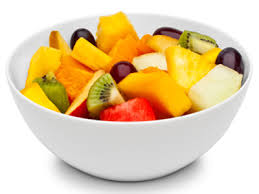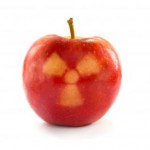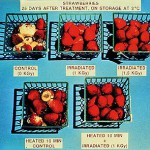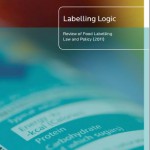FOE Press Release: Independent testing finds illegal and potentially harmful nanoparticles in common food products
Independent testing commissioned by Friends of the Earth has found potentially harmful nanoparticles of titanium dioxide (TiO2) and silica (SiO2) in a range of food products including M&Ms, Nestlé Coffee Mate Creamer, Old El Paso Taco Mix and Woolworths Homebrand White Sauce.
The silica and titanium dioxide in all 14 food products tested contained a high proportion of nanoparticles that have not been tested, labelled or approved for consumption in Australia. Furthermore, peer reviewed studies have raised health serious health concerns regarding the use of these nanoparticles in food.
Jeremy Tager, campaigner with Friends of the Earth’s Emerging Tech Project said “for over two years, our food regulator Food Standards Australia New Zealand (FSANZ) has insisted that foods containing nanomaterials are not sold here on the basis that no companies have applied for approval.[1] The agency has done no testing and hasn’t even asked manufacturers if its claim is true.”
“FSANZ has also told Parliament that food products containing these ingredients will not be sold until they have been subject to safety testing and pre-market approval.[2] By allowing these untested and potentially harmful substances into the food chain, FSANZ has inexcusably failed in its role as a regulator.”
Four years ago, a Government commissioned review of food labelling urged FSANZ to “develop as a matter of urgency a standard for regulating the presence of nanotechnology in the food production chain”.[3] Thus far, no action has been taken. [4]
Nano titanium dioxide is used as a whitener and brightener in a range of foods, including lollies, chewing gum and doughnuts. Children between the age of 2 and 4 have been found to have the highest exposure levels.
Animal studies of nano titanium dioxide show it can damage DNA, disrupt cell function, interfere with the immune system, cross the intestinal tract and cause organ damage.
Nano silica is used as a ‘trickle and flow’ aid in powdered food products. This year the European Commission’s Scientific Committee on Consumer Safety (SCCS) found evidence that nano silica can damage DNA[5] and concluded that the data is inadequate and no conclusion of safety can be made.[6] Several recent studies have shown that nano silica can cause liver toxicity[7].
“We provided evidence to FSANZ over a year ago that it is highly likely that foods containing manufactured nanoparticles are in the Australian food chain. The fact that every sample we tested contained a high proportion of nanoparticles, suggests that the use of nanomaterials in Australian foods is widespread,” said Mr Tager.
“Friends of the Earth Australia is calling for recall of all products containing nanomaterials and an immediate moratorium on the use of nanomaterials in food, pending full safety assessments,” concluded Mr Tager.
Media contact: Jeremy Tager: 0400 376 974
[1] FSANZ, response to Questions on Notice, Senate Estimates, SQ14-000086, February 2014. – FSANZ has told Parliament that it is “not aware of any manufactured nanomaterials being used in food available in Australia,” based on the fact that it “has not received an application to amend the Australia New Zealand Food Standards in relation to new or novel nanoscale particles for food use.”
[2] FSANZ, responses to Questions on Notice, Senate Estimates, SQ14-000074, SQ14-000082, February 2014;
SQ14-001329, SQ14-001342, October 2014.
[3] Blewett, N. et al (2011) Labelling Logic: Review of Food Labelling Law and Policy, p. 94.,http://www.foodlabellingreview.gov.au/internet/foodlabelling/publishing.nsf/Content/48C0548D80E715BCCA257825001E5DC0/$File/Labelling%20Logic_2011.pdf
[4] Review of Food Labelling Law and Policy, Progress Report, December 2014. http://www.foodlabellingreview.gov.au/internet/foodlabelling/publishing.nsf/content/Progress_report_December_2014
“Progress update: Monitoring. FSANZ is continuing to actively monitor this issue with a view to considering labelling of new technologies as required on a case-by-case basis. See actions for recommendation 2 & 28”
[5] Scientific Committee on Consumer Safety (SCCS) (2015) Opinion on Silica, Hydrated Silica, and Silica Surface Modified with Alkyl Silylates (nano form). SCCS/1545/15.March 2015,http://ec.europa.eu/health/scientific_committees/consumer_safety/docs/sccs_o_175.pdf p. 46.
[6] Ibid. p. 56.
[7] Van der Zande, M. et al. (2014) Sub-chronic toxicity study in rats orally exposed to nanostructured silica. Particle and Fibre Toxicology 11:8; Nishimori H, Kondoh M, Isoda K, Tsunoda S, Tsutsumi Y, Yagi K (2009) Histological analysis of 70-nm silica particles-induced chronic toxicity in mice. Eur J Pharm Biopharm 72:626–629; Nishimori H, Kondoh M, Isoda K, Tsunoda S, Tsutsumi Y, Yagi K (2009) Silica nanoparticles as hepatotoxicants. Eur J Pharm Biopharm, 72:496–501; Liu T, Li L, Fu C, Liu H, Chen D, Tang F (2012) Pathological mechanisms of liver injury caused by continuous intraperitoneal injection of silica nanoparticles. Biomaterials 33:2399–2407; Cho M, Cho WS, Choi M, Kim SJ, Han BS, Kim SH, Kim HO, Sheen YY, Jeong J (2009) The impact of size on tissue distribution and elimination by single intravenous injection of silica nanoparticles. Toxicol Lett 189:177–183; Lu X, Tian Y, Zhao Q, Jin T, Xiao S, Fan X (2011) Integrated metabonomics analysis of the size-response relationship of silica nanoparticles-induced toxicity in mice. Nanotechnology 22:055101; Downs TR, Crosby ME, Hu T, Kumar S, Sullivan A, Sarlo K, Reeder B, Lynch M, Wagner M, Mills T, Pfuhler S (2012) Silica nanoparticles administered at the maximum tolerated dose induce genotoxic effects through an inflammatory reaction while gold nanoparticles do not. Mutat Res 745:38–50; Xie G, Sun J, Zhong G, Shi L, Zhang D (2010) Biodistribution and toxicity of intravenously administered silica nanoparticles in mice. Arch Toxicol 84:183–190.












